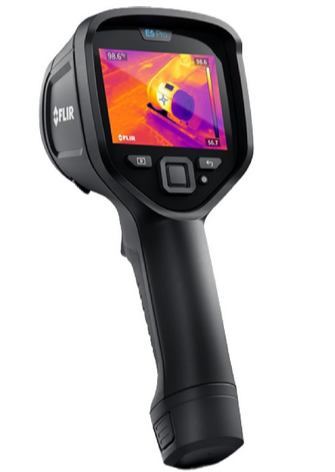1. Detects Hidden Moisture Issues One of the most significant benefits of thermal imaging is its ability to identify moisture problems. Leaks behind walls, under flooring, or in ceilings can be challenging to detect with the naked eye. Infrared cameras pick up temperature variations caused by moisture retention, allowing inspectors to pinpoint potential mold growth and water damage before they become severe issues (Source: International Association of Certified Home Inspectors, InterNACHI).
2. Uncovers Electrical Hotspots Electrical system failures can lead to costly repairs and even fire hazards. Thermal imaging helps inspectors detect overloaded circuits, loose connections, and overheating electrical panels. Identifying these problems early can prevent electrical failures and ensure homeowner safety (Source: National Fire Protection Association, NFPA).
3. Improves HVAC System Efficiency Assessments A well-functioning HVAC system is essential for a comfortable and energy-efficient home. Infrared cameras allow inspectors to assess heating and cooling system performance by identifying uneven temperature distribution, ductwork leaks, or insulation deficiencies. This information can help homeowners address inefficiencies and lower their energy bills (Source: U.S. Department of Energy).
4. Identifies Insulation Deficiencies Poor insulation leads to heat loss in winter and heat gain in summer, resulting in higher energy costs. Thermal imaging can reveal gaps in insulation within walls, attics, and crawl spaces. By addressing these deficiencies, homeowners can improve their home's energy efficiency and overall comfort (Source: Building Performance Institute, BPI).
5. Enhances Pest Detection Pest infestations, such as termites, rodents, or bees, can cause significant structural damage. Infrared imaging detects unusual heat patterns associated with nests or burrowing activity, helping inspectors locate infestations before they become a major problem (Source: National Pest Management Association, NPMA).
Most home inspectors do not offer this service as part of a home inspection service. It enhances the overall value of the inspection by providing more comprehensive insights, leading to increased trust and satisfaction. Buyers and sellers alike appreciate the added layer of detail that infrared technology provides (Source: American Society of Home Inspectors, ASHI).
Conclusion Thermal imaging is a powerful tool that allows home inspectors to uncover hidden issues related to moisture, electrical safety, HVAC efficiency, insulation, and even pest activity. Including infrared technology into the inspection process gives the inspector more accurate reporting, helps homeowners make informed decisions. Do not use an inspector who does not incl and gain a competitive edge in the industry.
If you have any questions don't hesitate to give us a call.

